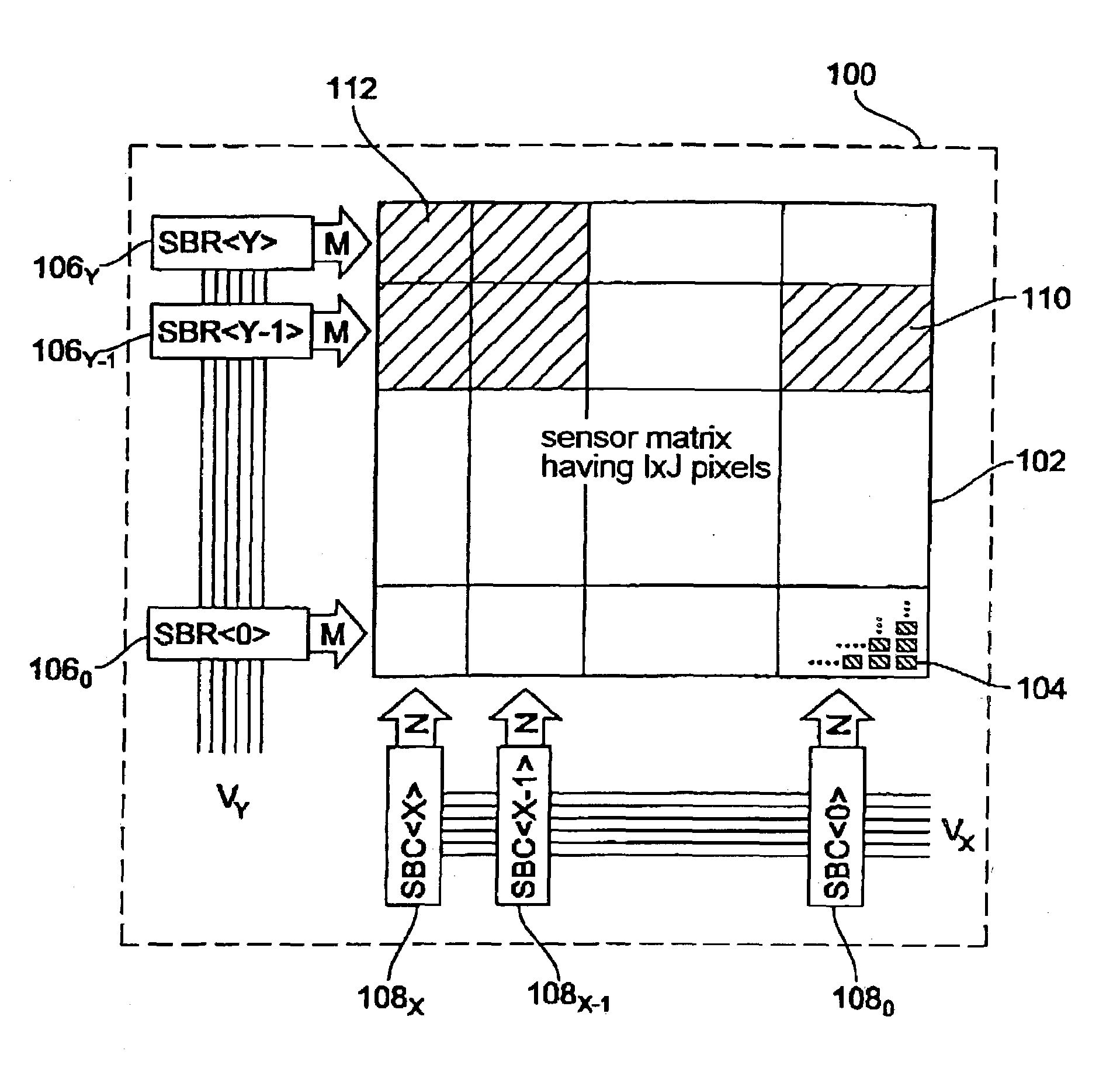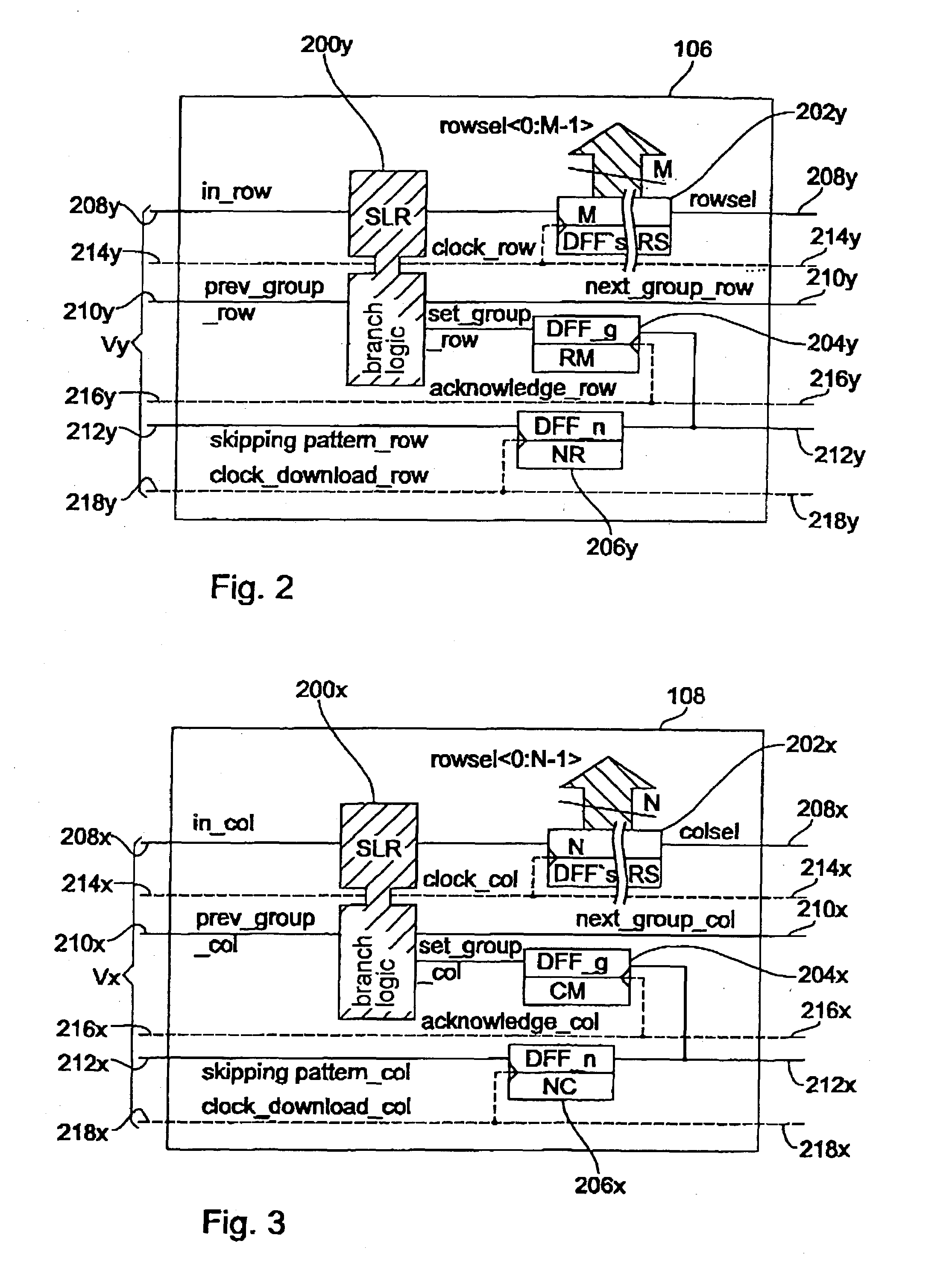Method and device for reading out image data of a sub-range of an image
a sub-range, image technology, applied in the field of methods and devices for reading out image data of a sub-range of an image, can solve the problems of inability to meet the high speed requirements, inability to reduce the bandwidth of the existing image sensor, and additional latency times (waiting periods) to achieve the effect of increasing the demand for spa
- Summary
- Abstract
- Description
- Claims
- Application Information
AI Technical Summary
Benefits of technology
Problems solved by technology
Method used
Image
Examples
Embodiment Construction
[0036]An image sensor 100 is schematically illustrated in FIG. 1. The image sensor 100 includes a sensor matrix 102 including a plurality of image sensor elements 104, of which, for reasons of clarity, only a few are illustrated in FIG. 1. The sensor matrix 102 basically has the same architecture as a conventional sensor matrix, as has been described, for example, referring to FIG. 7. The image sensor elements 104 (pixels) of the sensor matrix 102 are arranged in I rows and J columns, wherein I, J≧1. In the context of the present invention, driving the individual image sensor elements 104 is of interest so that, for reasons of clarity, the readout rows are not illustrated in FIG. 1.
[0037]In the embodiment shown in FIG. 1, a plurality of row branch blocks (SBR to SBR ) 106o to 106Y are arranged which are connected in series to one another via a plurality of driving lines VY. As is illustrated by the arrows associated with the individual row branch blocks 106o to 106Y, a predetermine...
PUM
 Login to View More
Login to View More Abstract
Description
Claims
Application Information
 Login to View More
Login to View More - R&D
- Intellectual Property
- Life Sciences
- Materials
- Tech Scout
- Unparalleled Data Quality
- Higher Quality Content
- 60% Fewer Hallucinations
Browse by: Latest US Patents, China's latest patents, Technical Efficacy Thesaurus, Application Domain, Technology Topic, Popular Technical Reports.
© 2025 PatSnap. All rights reserved.Legal|Privacy policy|Modern Slavery Act Transparency Statement|Sitemap|About US| Contact US: help@patsnap.com



